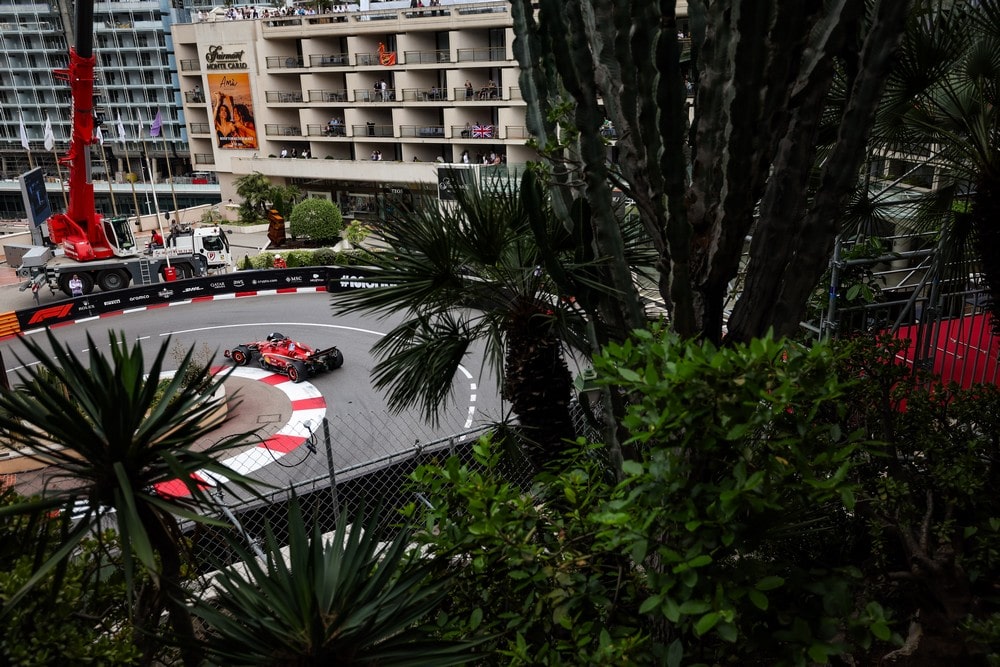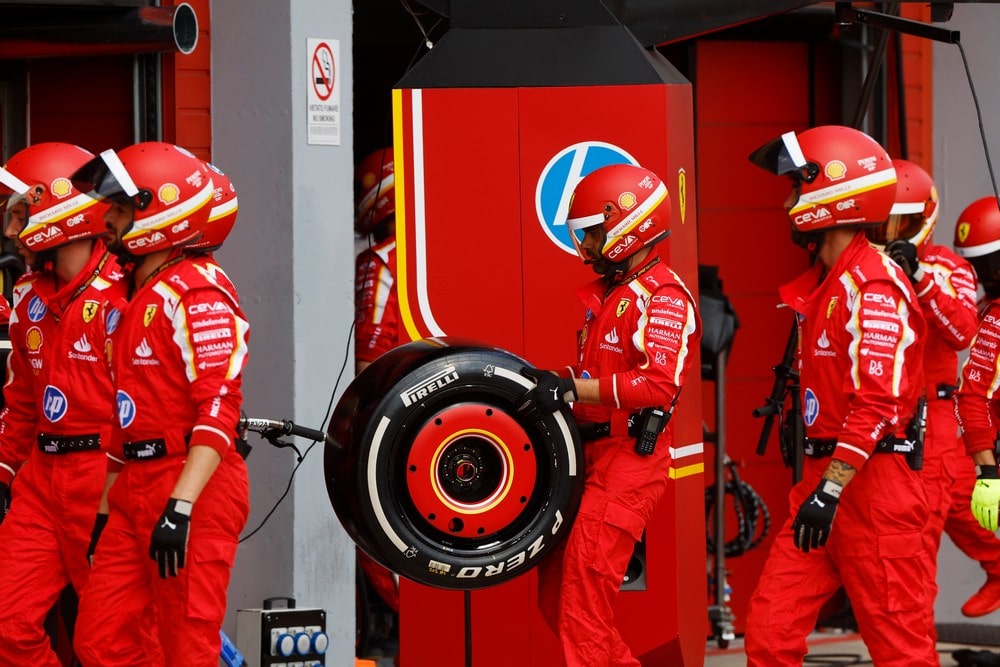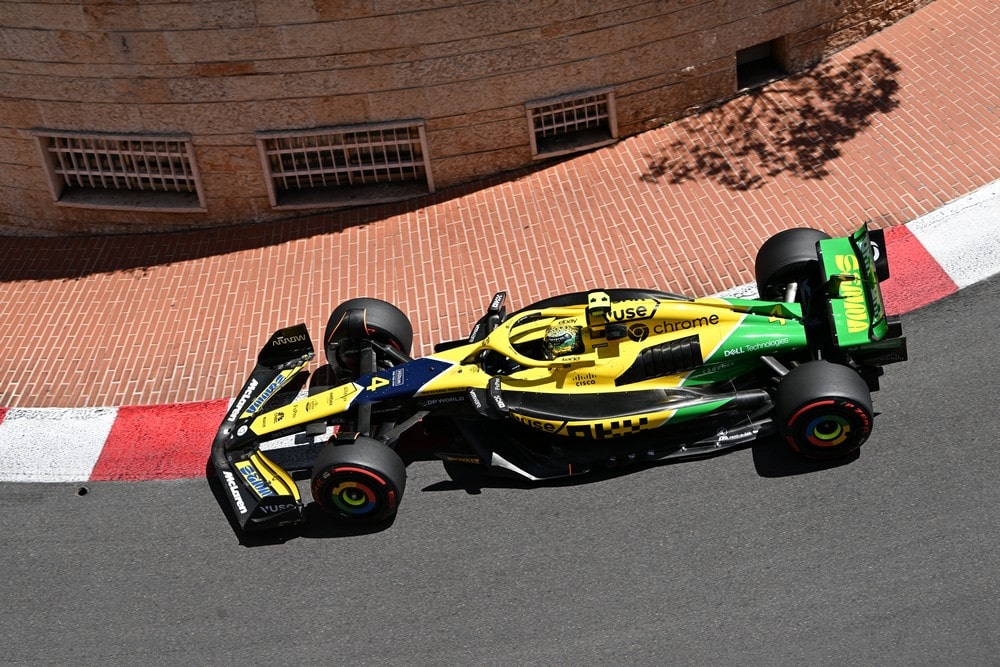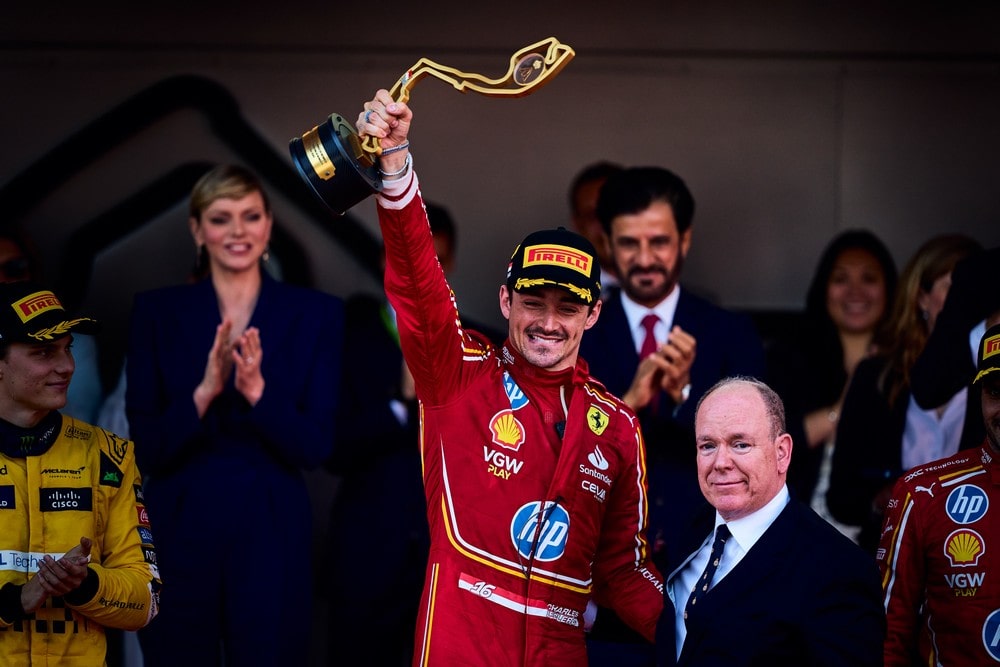
It was another race week, which came with its own set of headlines throughout the weekend, including a feel-good victory to top off the event. Numerous potential changes coming in the 2026 Concorde Agreement were revealed this week along with some staffing changes. Additionally, the Schumacher family has got justice in a recent legal proceeding.
The Schumacher family has won a legal battle against the German magazine Die Aktuelle over a fake AI-generated interview published last year. The magazine released a front-page feature claiming to have a “first interview” with Michael Schumacher since his 2013 skiing accident, but it was created using AI. In response to the controversy, the publication apologized and fired long-term editor-in-chief Anne Hoffmann. The Schumacher family took legal action in the German courts and settled with the magazine. Although the details have not been released, it’s believed that the family will receive €200,000.
The FIA has abandoned the idea of wheel cover spray guards after a private test by Ferrari at Fiorano a couple of weeks ago. During the test, one car was fitted with an extreme version of the spray guards while another followed to evaluate the visibility improvements. Despite deliberately fitting an over-the-top version of the guards, there were no significant improvements to visibility. The test ruled out tyre spray as a major hindrance to visibility, instead pointing to water thrown up by the diffuser.

Pirelli will test a new extreme wet tyre with Ferrari at a two-day Paul Ricard test next week. The test will begin on Tuesday with prototype 2025 slick compounds, focusing on the softer C3, C4, and C5 compounds. On Wednesday, the circuit will be made wet using the circuit’s sprinkler system and the new extreme wet type compound will be tested. Ferrari’s regular drivers, Charles Leclerc and Carlos Sainz, will each drive one day of the test.
Ferrari’s heritage bonus payments may be reduced in the upcoming 2026 Concorde Agreement. Ferrari is the only team to have competed in every season of Formula One and is rewarded for this with an exclusive bonus payment from the sport’s prize pool. The current agreement sees Ferrari earn a 5% bonus payment that can increase up to 10% depending on the size of the total prize pool. However, the new agreement is set to cap Ferrari’s bonus payment at 5% regardless of the prize pool size.
Plans to include maternity leave within a newly expanded $220 million budget cap from 2026 onward have been rejected by the teams. The initial plans were part of a push to include more expenses under the scope of the budget cap for the 2026 Concorde Agreement, but some teams were worried that including these expenses could discourage teams from hiring female employees. Additionally, a proposal to include staff entertainment expenses was also shot down due to fears it would punish employees because teams would need to choose between staff morale and team performance.
Formula One’s dilution fund paid by new teams could be increased dramatically as part of the new Concorde Agreement, making it more expensive for new teams to join the sport. The dilution fund is a fee that new entrants must pay in addition to the regular fees. The intention is for the amount to be split among the existing teams to offset any financial loss caused by having to split the prize pool with another team. Under the current Concorde Agreement, the dilution fund is valued at $200m, but that amount is now widely considered to be too small. It’s believed that a new proposal being discussed could require new teams to pay the dilution fund for multiple years (understood to be five years), totalling $600m. To make matters worse, an additional change has been proposed to stop new teams from earning any prize money in their first season. Although these changes would surely help current teams, it could potentially deter new teams from joining.
Formula One’s chief technical officer, Pat Symonds, has left his role to join Andretti’s Formula One project. He left his role as CTO at Williams in 2017 to take the same title in the F1 organization, playing a critical role in the current set of rules that greatly improved the quality of the racing in recent years. Despite initial plans to retire after the 2022 rules, Symonds decided to stay to work on the 2026 rules, which are set to be published in the coming weeks. After a mandatory gardening leave, he will join Andretti as an Executive Engineering Consultant at their new Silverstone base.
Red Bull chief engineer Paul Monaghan has renewed his contract as part of a long-term deal with the team. He has been with Red Bull since they took over the team from Jaguar in 2005, having previously worked with McLaren, Benetton, Renault, and Jordan. Monaghan is just one of many senior figures to have recommitted to Red Bull following the shock departure of legendary designer Adrian Newey. Following the team’s pre-season controversy, it was rumoured that the team could lose several key personnel in the aftermath, but we have yet to see this.
Williams is believed to be in advanced contract talks with Carlos Sainz for the 2025 season. Sainz is one of the larger free agents available, with Lewis Hamilton taking his Ferrari seat next year. He is understood to have been offered a long-term contract at Sauber (which will become Audi in 2026) but has also been linked to other teams such as Red Bull and Mercedes. Williams is eager to secure its driver lineup for the long term, signing a contract extension with Alex Albon just last week.

McLaren ran a special one-off livery at the Monaco Grand Prix to honour the late Ayrton Senna. Ditching their iconic papaya orange, their car was painted in the colours of Senna’s helmet: yellow, green, and blue. The front and rear wings feature Senna’s name while memorable quotes can be found inside the cockpit. Although last weekend’s race at Imola featured tributes for Senna, McLaren opted to run the livery at Monaco because it’s widely considered to be his most successful circuit. He is the circuit’s most winningest driver with six victories, including five consecutive wins between 1989 and 1993 while driving for McLaren.
Lewis Hamilton set the time to beat in the opening practice session of the weekend on Friday, narrowly outpacing the McLaren of Oscar Piastri by 0.029s. The session was briefly red-flagged with ten minutes remaining, as Zhou Guanyu brushed the barrier on the entry to Sainte Devote, littering the circuit with debris. George Russell, Lando Norris, and Charles Leclerc rounded out the top five while both Red Bulls found themselves outside the top ten.
Charles Leclerc set the fastest lap time on the second free practice session after climbing to the top of the timing sheets early. Max Verstappen attempted to best Leclerc’s benchmark but brushed the barrier at Portier. Leclerc also had a couple of close calls with the barrier. The closing half of the session was spent on long-run simulations. Lewis Hamilton, Fernando Alonso, Max Verstappen, and Lando Norris made up the top five.
The final free practice session again saw Charles Leclerc at the top of the results. The session was red-flagged in the opening minutes after Valtteri Bottas broke his suspension on the barriers at the Swimming Pool exit. When the session resumed, Leclerc quickly found his way to the top of the table. Max Verstappen attempted to set the fastest lap near the end of the session but was blocked by teammate Sergio Perez and had to settle for second fastest. Lewis Hamilton was the only other driver within 0.5s of the fastest Ferrari.
Charles Leclerc topped arguably the most important qualifying session of the season, earning pole position for the race. But he’s been there before and had not yet been able to shed the Monaco curse. Q1 was chaotic, as a congested circuit led to multiple impeding incidents. Near the end of the session, Lando Norris and Sergio Perez both found themselves in the knockout zone. Perez was unable to better his time and became the shock exit of Q1. Lando Norris was fastest in Q2 ahead of Max Verstappen, but had to settle for P4. McLaren teammate Oscar Piastri was able to come very close to Charles Leclerc but had to settle for P2 on the front row. More drama came after the session was over, with both Haas cars being disqualified from qualifying for an illegal DRS that opened too wide. They were forced to start the race from the back of the field.

Charles Leclerc was able to break the Monaco curse, becoming the first Monegasque driver to the Monaco Grand Prix since 1931, leading from lights to flag. There was a lengthy stoppage after only a few hundred meters of racing, as Sergio Perez slammed into the barriers when Kevin Magnussen attempted to get alongside him in Beau Rivage. The accident also collected Nico Hulkenberg. Esteban Ocon earned himself a penalty in a separate incident on the opening lap when he tried to dive up the inside of his teammate in Portier. Sainz was lucky to restart the race in P3 after puncturing his tyre in the first corner. After the race resumed, it was a race of waiting. Lance Stroll had a chance to challenge for points but suffered a puncture after clipping a barrier. Max Verstappen put George Russell under pressure late in the race, but the Monaco circuit proved too difficult to overtake. Oscar Piastri and Carlos Sainz joined Leclerc on the podium. Click here to read our full summary of the race.
Next up on the Formula One calendar is the Canadian Grand Prix at the Circuit de Gilles Villeneuve. The race will be held on the weekend of June 9.
It can be challenging for even the most avid fans to keep up with the fast-paced world of Formula One. The Weekly F1 Recap is a series published each Monday that breaks down the action, both on and off the circuit, into bit-sized pieces. It's perfect for casual and experienced fans alike.